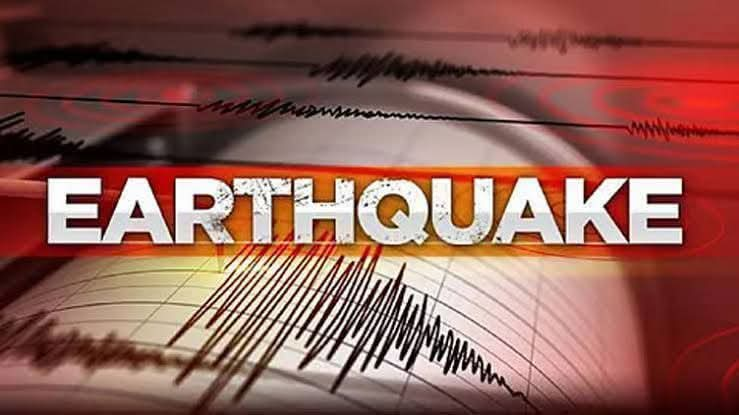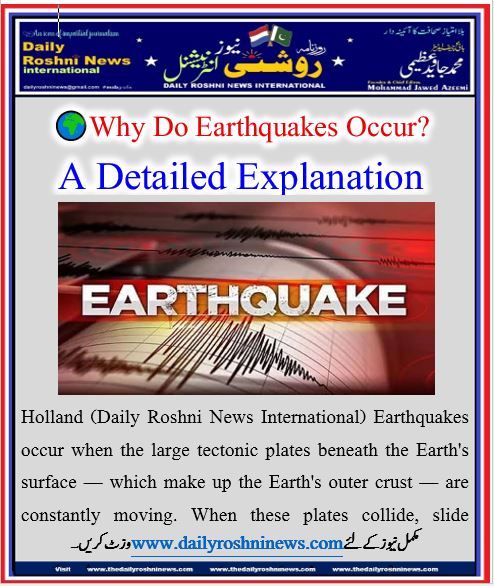🌍 Why Do Earthquakes Occur? A Detailed Explanation
Earthquakes occur when the large tectonic plates beneath the Earth’s surface — which make up the Earth’s outer crust — are constantly moving. When these plates collide, slide beneath one another, or grind along their edges, energy builds up at the points of contact. When this built-up energy exceeds a certain limit, it is suddenly released, causing the ground to shake — this shaking is what we call an earthquake. The places where these plates meet are called fault lines, and these areas are considered the most earthquake-prone zones.
We cannot accurately predict earthquakes because the movements deep within the Earth are highly complex and unpredictable. Scientific instruments can only indicate whether a region is at risk of earthquakes, but they cannot determine exactly when or how strong an earthquake will be. This is why an earthquake is considered a natural disaster that cannot be prevented — only caution and preparedness are the best ways to deal with it.
🌍 زلزلہ کیوں آتا ہے؟ تفصیلی وضاحت
زلزلے اس وقت آتے ہیں جب زمین کی اندرونی سطح پر موجود بڑی ٹیکٹونک پلیٹیں، جو کہ زمین کی بیرونی پرت (Earth’s Crust) کو تشکیل دیتی ہیں، مسلسل حرکت میں رہتی ہیں۔ جب یہ پلیٹیں آپس میں ٹکرا جاتی ہیں، ایک دوسری کے نیچے دھنس جاتی ہیں یا کناروں پر رگڑ کھاتی ہیں، تو ان کے درمیان توانائی جمع ہوتی جاتی ہے۔ جب یہ توانائی ایک خاص حد سے تجاوز کر جاتی ہے تو وہ اچانک خارج ہوتی ہے، جس کی وجہ سے زمین کی سطح زور سے ہلتی ہے — اسی کو زلزلہ کہا جاتا ہے۔ جن جگہوں پر یہ پلیٹیں آپس میں ملتی ہیں، اُنہیں فالٹ لائن (Fault Line) کہا جاتا ہے، اور یہی علاقے زلزلوں کے لحاظ سے سب سے زیادہ خطرناک سمجھے جاتے ہیں۔
ہم زلزلے کی درست پیش گوئی (prediction) اس لیے نہیں کر سکتے کیونکہ زمین کے اندر موجود حرکات نہایت پیچیدہ اور غیر متوقع ہوتی ہیں۔ سائنسی آلات صرف اتنا بتا سکتے ہیں کہ کسی علاقے میں زلزلے کا خطرہ موجود ہے یا نہیں، لیکن یہ نہیں بتایا جا سکتا کہ زلزلہ کب اور کتنی شدت کا آئے گا۔ یہی وجہ ہے کہ زلزلہ ایک قدرتی آفت ہے جس سے بچاؤ ممکن نہیں، صرف احتیاط اور تیاری ہی اس کا بہترین حل ہے۔
![]()





